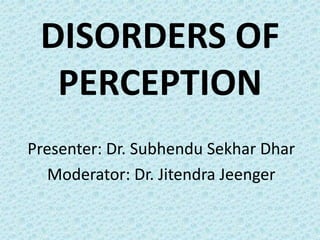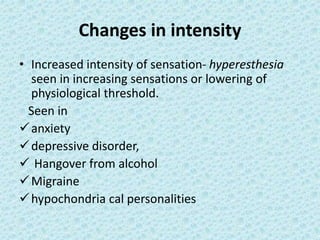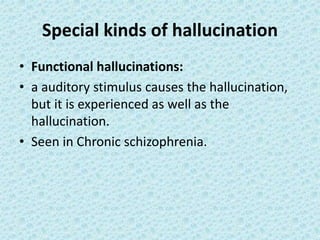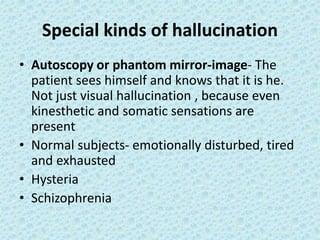This document discusses disorders of perception, including sensory distortions and sensory deceptions. It defines perception and divides disorders of perception into sensory distortions, where a real perceptual object is perceived in a distorted way, and sensory deceptions, where new perceptions occur that may or may not be in response to external stimuli. Specific types of sensory distortions discussed include changes in intensity, quality, spatial form, the experience of time, and splitting of perception. Sensory deceptions include illusions and hallucinations. Various causes and types of hallucinations involving different senses are also described.



















































